What are the symptoms of HS?
First, what does the word ‘symptoms’ mean?
Symptoms are all of the ways HS (hidradenitis suppurativa) changes the look and feel of your skin such as redness, darkening, or swelling. It also describes all the feelings from your skin, like pain, itch, or pulling. The symptoms are due to too much inflammation, and the strength (or intensity) of these symptoms can change over time. It may start as being sensitive, then change to ‘10 out of 10’ painful, then end by being itchy.
The look and feel of HS can change over time and be a little different for each person. HS might begin as a bump in your inner thigh or a spot in your armpit. You might think it was a pimple or in-grown hair, but with time these bumps can:
- Become larger
- Last for weeks or months
- Rupture or burst, then drain fluid
- Reappear in the same exact spot or different spots (usually the underarm, under the breast, fold of the leg, genitals, on and between the buttcheeks).
Depending on the appearance of the skin changes, your health care provider may describe these spots as nodules, abscesses, or tunnels:
- Nodules: Firm circles of inflammation deep in the skin.
- Abscesses: Firm areas of inflamed skin that have fluid in the center. It is common for an abscess lesion to drain fluid. The drainage is often cloudy or mixed with blood, and can also have a strong odor. This is a common indicator for HS abscesses.
- Tunnels: Tunnels are shaped like a submarine, oval or stretched-out. Like a submarine, the inflammation is deep in the skin and sometimes comes to the surface, opening into a sore and releasing fluid. Tunnels may stay constantly active or come to the surface now and again.
When these symptoms have gone away from a spot, they can leave discoloration and scars. When HS symptoms reappear or worsen, it’s called a flare or flare-up.
Examples of mild HS symptoms
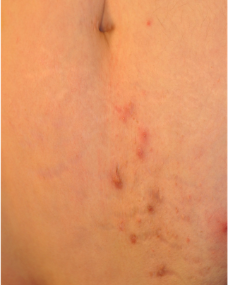
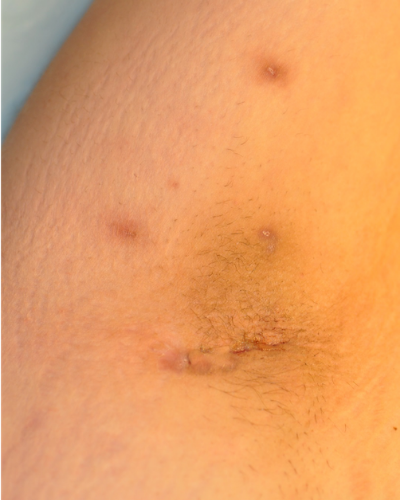
Examples of moderate HS symptoms
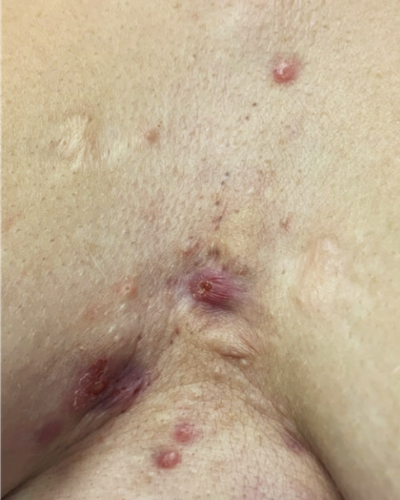

Examples of severe HS symptoms
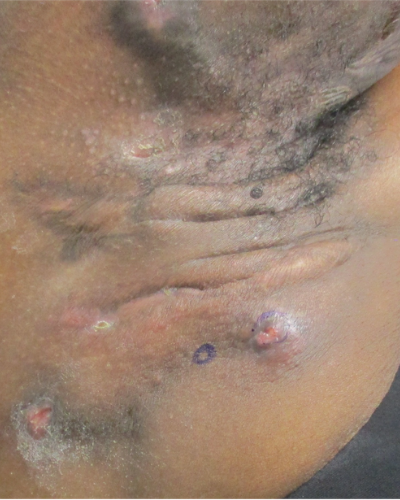
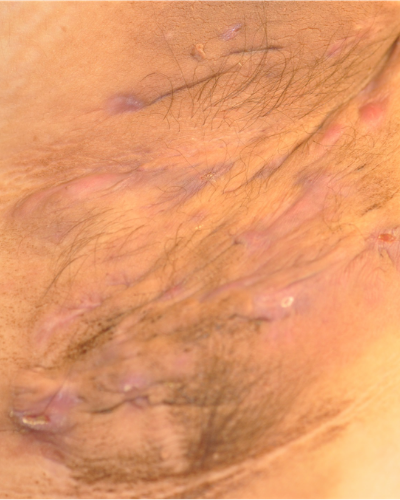
How is HS Diagnosed?
To diagnose HS, your health care provider will examine your skin and ask you questions about what you’ve been seeing and feeling. Your doctor may take a sample of fluid using a cotton swab if there is fluid, but just because it might grow bacteria does not mean you have a true infection. Remember, HS is inflammation, not infection.
There is no skin test or blood test that can diagnose HS, so that’s why it is important for you to talk to your doctor about the spots you have that day and all the spots you’ve had over time. Getting the right diagnosis can help you and your doctor figure out what treatments are best for you.
Think you or someone you know may have HS?
Explore our website for more information and discuss your symptoms with your medical provider or dermatologist soon.

